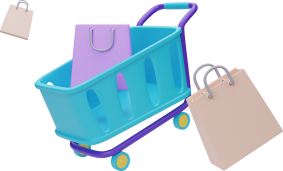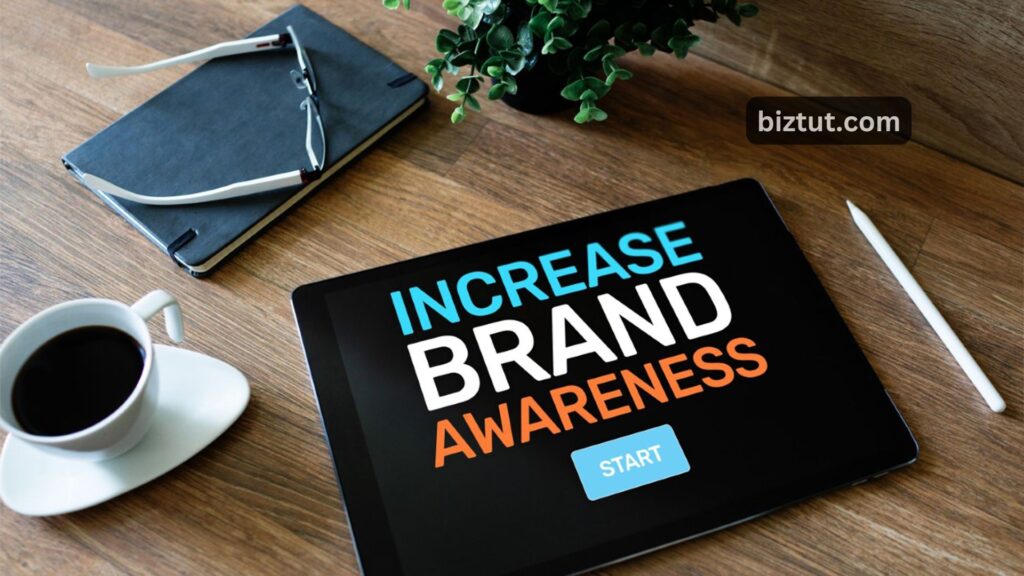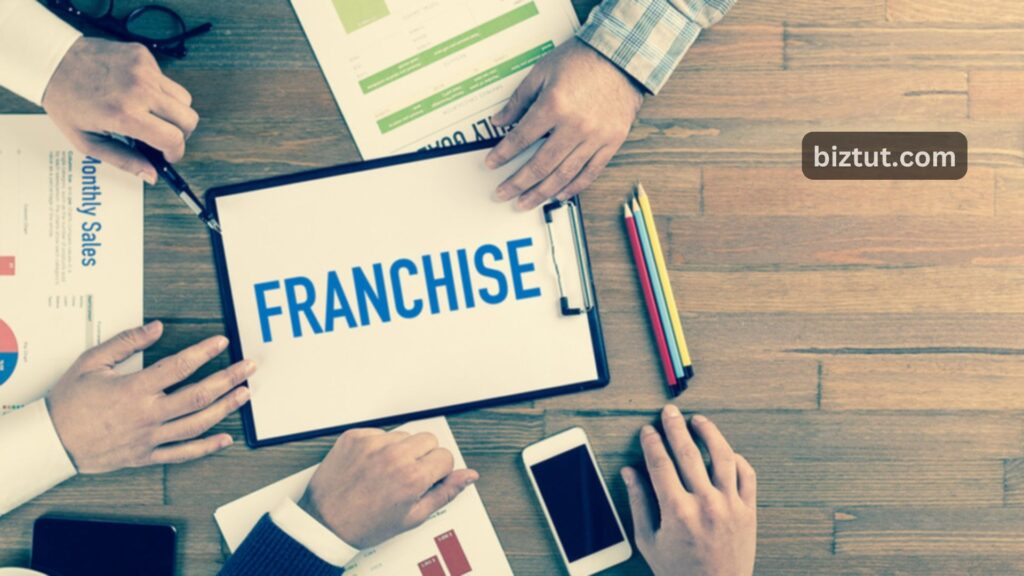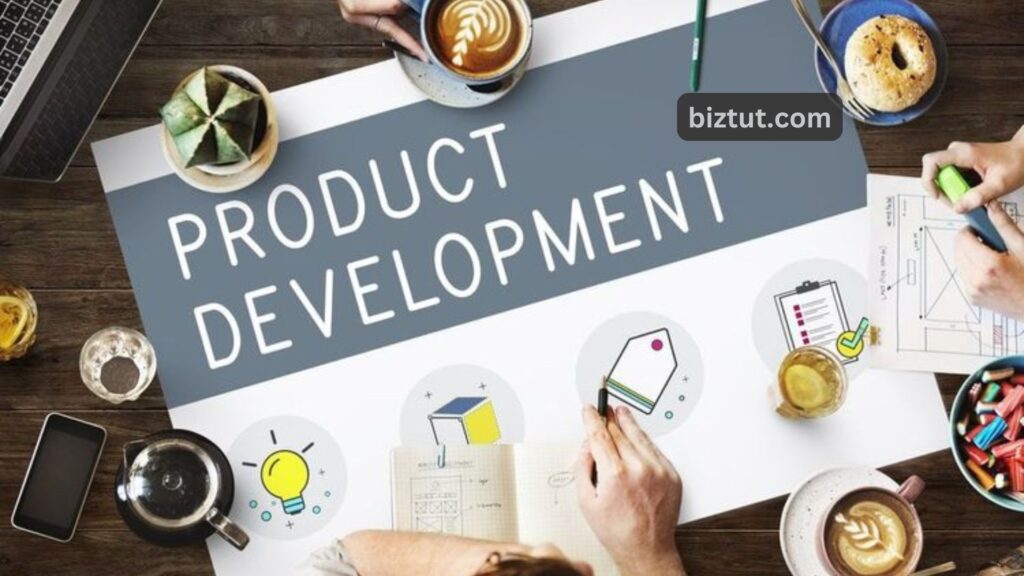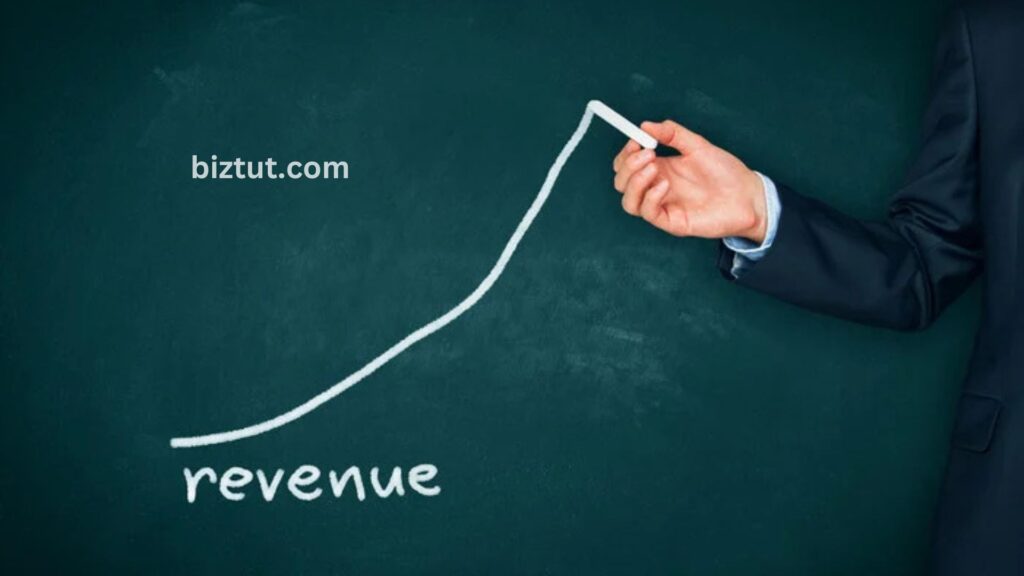When you see a bitten apple, a simple checkmark, or a colorful ‘G,’ you immediately think of Apple, Nike, and Google. That’s the power of brand awareness. Want to make sure your brand sticks in people’s minds, too? Here’s how.
Brand awareness is all about how well consumers recognize and remember your brand—your products, logo, and values. It’s a key part of marketing that helps build customer loyalty and sets you apart from the competition.
Think of brand awareness as planting a seed in people’s minds. It’s the starting point for how customers recall your brand when they’re ready to make a purchase. Without strong brand awareness, even amazing products can go unnoticed.
The more familiar people are with your brand, the more likely they are to choose you over others. Building brand awareness means making sure your brand leaves a lasting impression. This could be through consistent messaging, memorable visuals, or positive experiences—but that’s just scratching the surface.
In this article, we’ll look at effective strategies to build your brand’s presence and help it shine in today’s competitive market.
What is brand awareness?
Brand awareness is all about how well your target audience recognizes your brand. It answers the question, “How familiar is your target market with what you offer?”
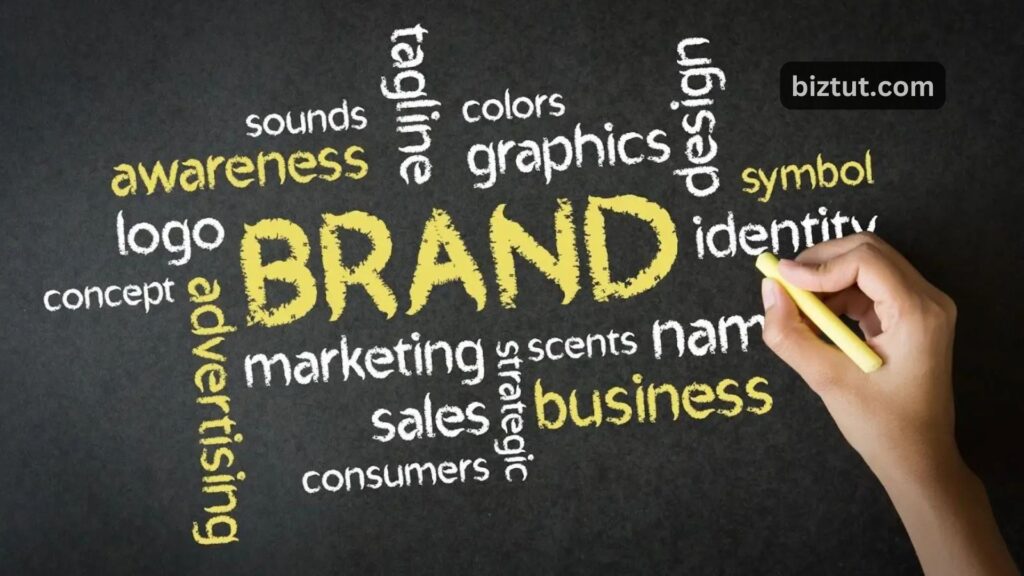
Let’s take Coca-Cola as an example. No matter who makes it, “Coke” often refers to any soft drink. This shows that people recognize Coca-Cola more than other fizzy drink brands.
Building brand awareness is one of the best things you can do for your brand. When people are highly aware of your brand, it can boost the value of your products or services and give you an edge over competitors.
Brand awareness is also a big part of brand equity, which is the perceived value people get from a product or service. Companies with high brand equity often have loyal customers who are willing to pay more for their offerings.
On the flip side, if a company has low brand equity, it might struggle to compete in its industry.
What are the key elements of brand awareness?
Here are the key elements of brand awareness:
- Brand Recall: This is how well consumers can remember a brand when they think about a product category.
- Brand Recognition: This refers to how easily consumers can identify a brand by its logo, packaging, or name when they see it.
- Top-of-Mind Awareness: This is the first brand that pops into your head when you think about a product category. For example, when you say you’re going to look something up online, you probably say you’re going to “Google” it, not “Internet Explore” it or “Edge” it.
- Brand Association: These are the emotional, mental, or sensory connections people have with a brand. Take the Haribo slogan: “Kids and grown-ups love it so – the happy world of Haribo.” It creates a fun and joyful image.
- Perceived Quality: This is how consumers view the quality of a brand compared to others in the market.
- Brand Loyalty: This describes how likely consumers are to choose one brand consistently over others.
- Brand Identity: These are the unique traits and features that set a brand apart from its competitors.
- Brand Communication: This is about how a brand’s message is shared and understood through marketing.
- Brand Visibility: This measures how often and where people see a brand in the market, like in ads or sponsorships.
- Brand Experience: This includes all the interactions customers have with a brand, which shapes their perceptions and awareness. For instance, Coca-Cola’s ads focus on joy and spending time with friends and family.
9 steps to brand awareness strategy
A brand awareness strategy helps people become familiar with your brand and recognize it when they see it. It creates a strong connection between your brand and what you offer.

Think of the slogan: “Hotel? Trivago.” This catchy phrase makes people remember Trivago whenever they’re looking for hotels. The goal is to get potential customers to think of your brand first when they’re ready to buy something.
You don’t need to have a clever slogan to build brand awareness, though. I’ve got some simple but effective tactics to help you create brand awareness from scratch. Try mixing these strategies to reach as many people as possible.
1. Create a Consistent Brand Image
A strong brand image is key to staying memorable. By developing a clear and recognizable identity, your target audience will know who you are and what you stand for.
One of the best ways to create a strong image is to keep your visuals consistent everywhere—from your website to your business cards. Using the same colors, fonts, and logo helps people easily recognize your brand.
For example, look at Google. Its consistent color scheme and logo style unite all its products. Creating a brand book can help you establish your unique style and visual identity.
2. Get to Know Your Audience
Understanding what your customers expect is crucial for increasing brand awareness. Building strong relationships will help your brand thrive in today’s competitive market.
So, how do you keep track of what your customers are saying? That’s where social listening comes in! This tool helps you hear what people are saying about your brand in real time. You can use this feedback to adjust your marketing strategy and ensure your brand is seen positively.
For media monitoring, set up at least two projects: one for mentions of your brand and another for topics related to your industry. This way, you can find relevant conversations to join, swaying potential customers toward your brand and even attracting your competitors’ clients.
3. Establish a Tone of Voice
Having a consistent tone of voice helps customers recognize and distinguish your brand from others. Think about the personality you want to convey and what will resonate with your audience.
Once you decide on a tone, use it across all channels. For example, Old Spice has a funny and exaggerated masculine tone that makes its ads stand out.
4. Create a Unique Selling Proposition (USP)
Your USP should highlight what makes your brand different from your competitors. Are your products the most durable? Do they cater to a specific group? Or do you offer a unique experience that no one else can?
Your USP should be clear, memorable, and relevant to your target market. A catchy slogan that resonates with your audience can make a big impact. At Brand24, we say: “Get instant access to brand mentions across social media, news, blogs, and more.” Our clients love that they can discover all brand mentions quickly without needing their phone number or a demo call.
5. Do Your SEO Research
Search Engine Optimization (SEO) is essential for getting your website noticed. According to Search Engine Watch, the top listing on Google gets about 33% of the traffic, while the second spot gets 18%.
To build brand awareness through SEO, find out what people are searching for. Tools like SEMrush or Ahrefs can help you discover the right keywords to rank for. This way, your brand shows up when potential customers are looking for products or services like yours.
6. Use Social Media Wisely
These days, it’s hard to overstate the power of social media. With over two billion active users on Instagram, you have a massive audience at your fingertips.
On one hand, this popularity is great because you can easily reach new audiences. On the other hand, your competitors can do the same. To stand out, your message needs to grab attention.
Choose the right social media platforms where your audience is active. You don’t want to waste time on platforms that won’t reach your target market. For example, B2B companies often do well on LinkedIn, while visually engaging brands shine on Instagram and TikTok.
7. Create Shareable Content
Exciting and informative content is a fantastic way to get people talking about your brand. Whether through articles or social media posts, provide valuable information that helps solve a problem. People love to share helpful content!
You can also add social sharing buttons to your blog, making it easy for readers to share your posts with their followers.
8. Implement Remarketing Campaigns
Remarketing campaigns target users who visited your website but left without converting. This is a smart way to boost awareness among people who already know about your brand.
These campaigns reinforce your message, taking several touchpoints to turn potential clients into loyal customers.
9. Measure Brand Awareness
You can’t build brand awareness without tracking your results. Measuring awareness can be tricky, but it’s essential to understand how well your marketing efforts are working.
To track brand awareness effectively, you need to pick tactics and metrics related to your marketing goals. For example, monitor how many people mention your brand—if that number grows, it means more people are talking about you!
There are plenty of tools available for measuring brand awareness, including social media analytics and SEO tools. Brand24 is one of them.
These tips are a great starting point, and there are plenty more ways to boost brand awareness that you can implement right away!
How long does it take to build brand awareness?
It really depends on a few things, like how big your target audience is, your marketing budget, and the strategies you’re using.
But if you plan and run your brand awareness campaign well, you can start seeing results in just a few months.
Remember, building brand awareness is a journey. It takes consistent effort every day!
Why is brand awareness important?

Strong brand awareness can really impact how well your business performs. It brings benefits that touch every part of your organization, from marketing to design and customer service.
1. Increasing Customers’ Trust
Trust is super important today. People often rely on recommendations from family and friends, and they read reviews before making a purchase. Brand awareness campaigns help build that trust by clearly sharing your brand’s values and mission. When customers trust you, they’re more likely to come back for more. In simple terms, when people know and feel connected to your brand, they become loyal, which directly boosts your sales.
2. Growing Brand Equity
Brand equity is the overall value of your brand, and brand awareness plays a big role in that. Customers who recognize your brand are more likely to engage with it. The more they interact, the more they trust you, which helps increase your brand’s value. Remember, brand equity isn’t just about what a company owns; it’s also about its reputation and trustworthiness. Building positive associations is crucial for enhancing your brand equity.
3. Making Marketing Easier
Brand awareness can simplify marketing efforts. It helps create strong associations with specific products. For instance, many people use brand names like “Kleenex” for tissues or “Coke” for soda. When a brand is well-known, consumers often reach for it without thinking twice. This familiarity helps spread word-of-mouth marketing, making your job as a marketer easier.
4. Helping Reach Your Target Audience
Brand awareness is key to building your customer base. Well-known brands can spend less on marketing and still make sales, steadily growing their audience.
5. Influencing Consumer Purchase Decisions
Brand awareness significantly affects how consumers choose between products. Research shows that about 82% of customers prefer familiar brands over unknown ones. The takeaway? The more people know about your brand, the higher your sales can be.
6. Leading to Brand Loyalty
Brand awareness is crucial for building loyalty. Customers need to recognize a brand to consider it when buying, and they need to feel loyal to keep coming back. Here’s how it works:
- Brand Recognition: Familiarity makes customers comfortable. They know what to expect.
- Emotional Connection: When customers feel connected to your brand, it becomes part of their identity.
- Brand Loyalty: Once customers know and trust your brand, they are more likely to stick with it, even if they see other options.
7. Helping Businesses Compete More Effectively
Brand awareness gives businesses a competitive edge by making their products or services more recognizable to consumers. When people are familiar with a brand, they are more likely to choose it over competitors. This visibility can lead to higher sales and market share. Brand loyalty is key here, too. Loyal customers often stick with a brand, even if competitors offer similar products at lower prices. These loyal customers not only ensure consistent revenue but also help promote your brand to others.
In summary, brand awareness and loyalty work together to give your business a competitive advantage!
Examples of good brand awareness campaigns
I bet you’re curious about how big brands create awareness for themselves. Many of them use hashtag campaigns because they’re pretty easy to track and measure. Plus, social media users love using hashtags, which helps them go viral and spread quickly across the internet.

Here are some awesome examples of branded hashtag campaigns aimed at boosting awareness:
#ASICSFrontRunner by Asics
Asics is a Japanese sportswear brand known for its shoes, clothing, and accessories for sports like running, tennis, and cricket. Recently, they launched the ASICS FrontRunner program, which connects runners from all over the world. Participants compete in races while wearing Asics gear and happily share their results and experiences on social media using the hashtag #ASICSFrontRunner. This hashtag was used 886 times in the last 30 days, with Instagram being the main platform for mentions.
#GivesYouWiiings by Red Bull
Red Bull’s slogan, “Gives You Wiiings,” highlights how their energy drink helps you get the boost you need to achieve your goals. The brand is famous for its creative marketing, often tied to extreme sports. This focus on thrill and excitement creates a strong identity that resonates with its audience. As a result, Red Bull has become one of the most recognized brands globally, thanks to its smart marketing strategies that have built a loyal fanbase. In the last 30 days, the hashtag #GivesYouWiiings was used 641 times, with TikTok being the primary source of mentions.
#SpotifyWrapped by Spotify
#SpotifyWrapped is a fun annual event where users get a personalized look at their music listening habits over the year. This event encourages users to keep using Spotify while also bringing back memories of their favorite songs. It usually runs for about two weeks, inviting users to share their results on social media. Participants can see how many hours they listened to music, their most-played artists, and top genres. They can even compare their results with friends! In the last 30 days, the hashtag #SpotifyWrapped was used 510 times, with X (formerly Twitter) being the main source of mentions.
These campaigns show how effective hashtags can be in raising brand awareness and engaging audiences!
Also Read: How to Retain Existing Customers?
Strong brand awareness examples
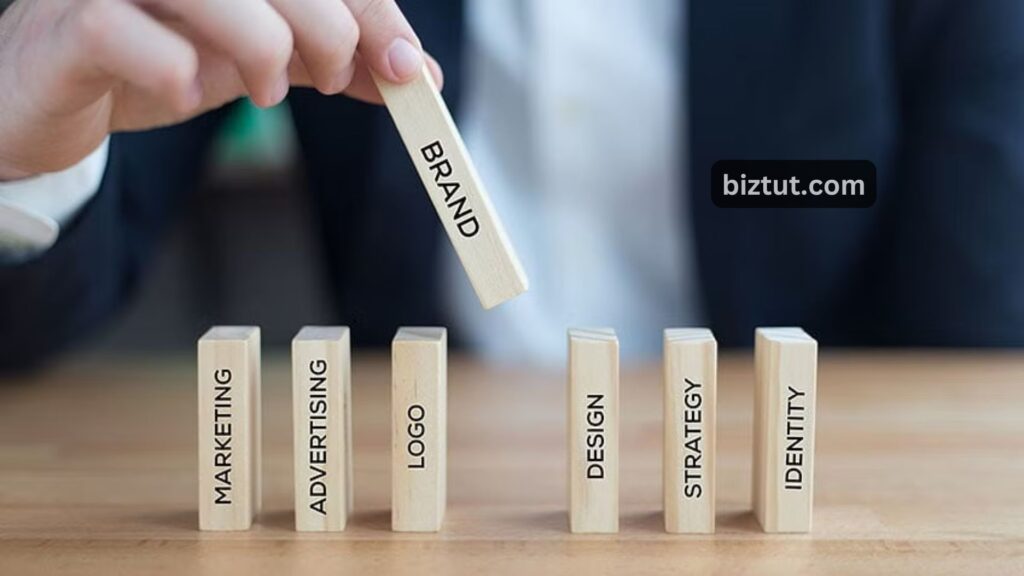
When it comes to strong brand awareness, a few names really shine on a global scale. Let’s take a look and get inspired!
Google
Google is so much a part of our lives that “Googling” something has become a common way to say you’re searching online. Its simple homepage and fun Doodles make it feel friendly and easy to use. But Google is more than just a search engine; with products like Gmail, Maps, and Meet, it’s woven into our daily routines.
Apple
Apple is famous for its sleek designs and innovative technology, easily recognized by its bitten apple logo. The brand sets the bar high for quality with popular products like the iPhone, MacBook, and Apple Watch. Apple’s focus on user experience and design has created a loyal fan base, making it one of the most valuable brands in the world.
Coca-Cola
Coca-Cola is the go-to name for refreshment. Its red and white logo, along with its classic contour bottle, is known almost everywhere. Their Presence Score backs this up! With memorable ads and beloved holiday campaigns featuring Santa Claus, Coca-Cola has cleverly positioned itself as a symbol of joy and togetherness.
Haribo
Even in the candy world, Haribo has nailed brand awareness. Their catchy jingle, “Kids and grown-ups love it so,” along with their iconic golden gummy bears, brings a sense of fun and nostalgia. Haribo is recognized and loved by people of all ages for its high-quality, playful treats.
These brands show us how effective strong brand awareness can be!


